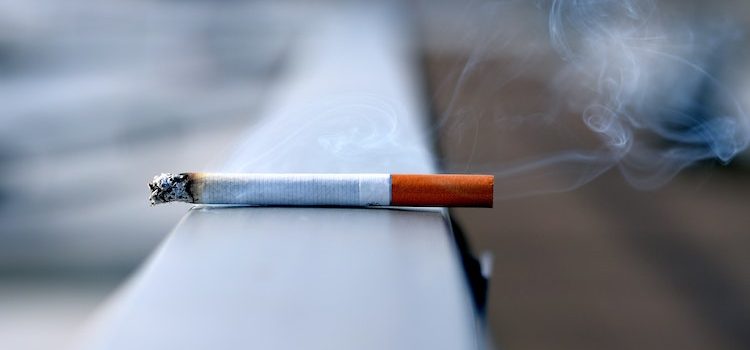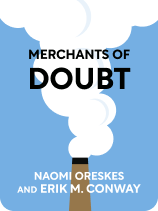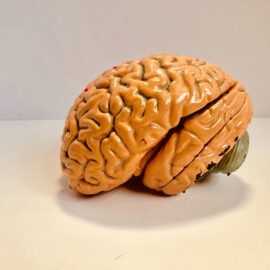

This article is an excerpt from the Shortform book guide to "Merchants of Doubt" by Naomi Oreskes and Erik M. Conway. Shortform has the world's best summaries and analyses of books you should be reading.
Like this article? Sign up for a free trial here .
What is the truth about the dangers of secondhand smoke? Why has it taken so long for people to understand them?
In Merchants of Doubt, Naomi Oreskes and Erik Conway look at the history of doubt-mongering surrounding the dangers of secondhand smoke. The merchants of doubt attacked the Environmental Protection Agency (EPA) for doing “bad science.” This had crucial implications for public awareness and policy.
Read more to learn about the truth and doubt surrounding the dangers of secondhand smoke.
Discovery of the Dangers of Secondhand Smoke
In the 1970s, tobacco industry scientists discovered that secondhand smoke could cause cancer. In fact, they discovered that secondhand smoke was actually more toxic than active smoke. This was partly because more toxic compounds develop when cigarettes burn at a lower temperature (smoldering) than at a higher temperature (while smoking).
The industry responded to this discovery by:
- Attempting to make secondhand smoke less dangerous by making cigarettes smolder at higher temperatures or improving cigarette components such as filters or papers
- Attempting to make secondhand smoke less visible
Mainstream science started to unearth the dangers of secondhand smoke in the 1980s:
- In 1980, a paper in the New England Journal of Medicine found that people who didn’t smoke but worked in smoky offices had decreased lung function. It was a statistically significant, large study.
- In 1981, Takeshi Hirayama of Tokyo’s National Cancer Center Research Institute studied the nonsmoking wives of nonsmoking and smoking husbands. The women with smoking husbands died more often from lung cancer, and the more heavily the husbands smoked, the more severe the wives’ cancer. This showed a “dose-response” curve—the more someone was exposed to smoke, the more their risk of lung cancer increased. The paper also considered other possible explanations for lung cancer and found none.
The MOD’s Response
The tobacco industry attacked both papers. They criticized the first because the offices were “smoky,” but scientists hadn’t measured exactly how much smoke the workers were exposed to. (This is a hard thing to measure because smoke quickly disperses in the air.)
To deal with the second paper, they hired consultants to disprove Hirayama. One consultant accused Hirayama of making a critical statistical error, and the Tobacco Institute advertised the critic’s work and got the press to cover it by calling for coverage of “both sides” again. (Industry internal memos acknowledged that Hirayama’s study was accurate, and he was an expert scientist.)
Policy and Public Action
The industry received equal media coverage, but their tactics didn’t fool the scientific community, and medical professionals and anti-tobacco activists pushed for regulation of smoking in public. States started restricting public smoking, the Civil Aviation Board considering banning smoking on flights, and Congress considered advertising controls.
In 1986, a Surgeon General’s report announced that secondhand smoke could cause health problems, including lung cancer, even in people who didn’t smoke. Additionally, secondhand smoke was especially dangerous to young children. The Executive Summary of the report strongly advised policy action. Smoking was no longer something that only affected the smoker—it could kill bystanders too.
The MOD’s Response
These developments worried the industry because if people were no longer able to smoke in public places, they would smoke less. They responded by:
- Associating smoking with power (rather than illness) in pop culture. For example, the industry paid Sylvestor Stallone half a million dollars to use cigarettes in five films.
- Suggesting that restricting workplace smoking was discrimination.
- Suggesting that health problems were caused by “sick building syndrome” (the buildings people worked in making them sick), not smoking.
- Working with anti-tax groups to fight against cigarette excise taxes.
- Starting “Project Whitecoat,” which was to recruit scientists to find evidence to support their position.
- Developing more favorable scientific evidence and recruiting expert witnesses. The Center for Tobacco Research used attorney-client privilege to hide their involvement.
Tobacco company Philip Morris’s leaders came up with four goals for secondhand smoke in 1991:
- Keep the controversy alive and manufacture doubt. They dedicated $16 million for this.
- Combat the bans in eateries and workplaces.
- Keep smoking sections in transportation facilities such as train stations.
- Fight for “accommodation” for smokers.
Further Scientific Exploration
In 1992, the U.S. Environmental Protection Agency (EPA) reviewed the existing scientific studies on the dangers of secondhand smoke and released a report that concluded:
- 3,000 people died of lung cancer per year due to inhaling secondhand smoke.
- Secondhand smoke could cause pneumonia and bronchitis, and aggravate asthma, in young children.
- Even if you already smoked yourself, being exposed to secondhand smoke increased your risk of health problems.
- There was a statistically significant correlation between sudden infant death syndrome and secondhand smoke, though the scientists didn’t know whether the risk came from smoking while pregnant, after giving birth, or both.
- Secondhand smoke probably caused other health problems, but more research was needed, so the report considered its assessment of the harms understated.
The EPA developed the report according to the “weight of evidence approach”—which considers all evidence and determines what it points most strongly toward. This is useful because all studies have limitations, but looking at all of them will give the most accurate picture.
- Example #1: Imagine you find a statistical correlation between secondhand smoke and health risks in humans, and that it follows a dose-response curve. This correlation could mean that secondhand smoke causes health risks, or it could just be a coincidence. However, if you also consider a study that found that secondhand smoke also causes health risks in animals, and also follows a dose-response curve, it’s likely not coincidence.
- Example #2: If many studies all have similar results, the evidence carries greater weight.
The MOD’s Response
The merchants of doubt responded by weighing in on the EPA report and attacking mainstream science.
Addressing the Environmental Protection Agency (EPA) Report
Enter Fred Seitz. Seitz started working on secondhand smoke in 1989, and to address the EPA report, he suggested that instead of challenging the evidence itself, the industry should cast doubt on the EPA’s approach (weight-of-evidence). The industry would claim that examining all the evidence was a mistake and that it would be better to focus on the “best evidence.”
This wasn’t inherently unreasonable. Some studies are bad and don’t deserve to be considered. However, a “best evidence” approach could quickly turn into focusing only on the evidence that agrees with your position, and Seitz considered that the “best evidence” to be studies with “ideal research designs.” Ideal research designs are impossible in medical studies of humans, because the variables can’t be completely controlled. The tobacco industry didn’t think Seitz’s ideas would be effective, and they went to work with Fred Singer instead.
Attacking Science
Singer’s approach was to promote science that agreed with the industry’s position as “sound science” and to dismiss everything else as garbage. To effectively do this, he and the industry would have to:
- Discredit not just the unfavorable EPA report but the organization’s entire body of work, accusing them of doing bad science and manipulating the data to further their goal of greater regulation.
- Attack mainstream science in general, because most of the EPA report assessed studies done by independent scientists.
In March 1993, Singer wrote an article called “Junk Science at the EPA” that accused the EPA of doing bad science by:
- Not requiring a high enough confidence level. The EPA accepted results at the 90% confidence level. According to Singer, they should have required a 95% confidence level. (90% is acceptable, and the EPA actually did use 95% in the parts of the report that covered less well-studied effects.)
- Not considering other causes of health problems. (Again, the EPA had—the EPA knew that many factors affected health, and it determined that secondhand smoke was an additional risk.)
Bad Science
In 1993, the tobacco industry put out a book called Bad Science aimed at fact-fighters that explained how to manufacture doubt. A large section was devoted to the 1992 EPA secondhand smoke report as a case study. The book stated that:
- The EPA report had been criticized. (It had been, but only by tobacco industry scientists.)
- The EPA hadn’t consulted with leading scientists and hadn’t used peer review. (The EPA had done both of these things.)
- The case was an attack on individual freedom—if smoking was restricted, what would the government try to control next?
More generally, the book included:
- Quotes and anecdotes challenging science, which corporations could supply to the media. Once the media printed them, corporations could attribute them to the publications they appeared in, lending them an air of legitimacy.
- Articles that were published in pro-business publications. These were usually written by nonscientists or people with a pro-business agenda. They rarely contained evidence.
- Articles from mainstream media that covered scientific failures and malpractice. (For example, a postdoctoral fellow at a famous lab once faked results.) These events really did happen, but the book made it seem like they were widespread and common in the scientific community.
- A list of experts who could provide new quotes on scientific issues and unfavorable research (any issue or research, regardless of their field).
The Advancement of Sound Science Coalition (TASSC)
In November 1993, the public relations firm APCO (on behalf of tobacco company Philip Morris) created The Advancement of Sound Science Coalition (TASSC) to promote “junk science.” TASSC was a hit in several cities and attracted a lot of media attention. Among other things, TASSC:
- Published articles in conservative publications denouncing certain science as junk
- Called on Fred Singer, Fred Seitz, and other merchants of doubt as advisors
- Attempted to attract reputable scientists who might agree that whatever TASSC decried as junk science actually was junk science
- Via Stephen J. Milloy, created the website JunkScience.com, which attacked any health or environmental-related science that affected a commercial product, not just the EPA
- Created a journalistic award for journalists who covered what the organization called “sound science”
- Pushed the idea that science was an attack on capitalism—it was a left-wing attempt to increase regulation and change the country’s ideology
Policy and Public Action
By the 1990s, more and more Americans were turning away from smoking. Attacking scientific confidence limits was obscure and didn’t attract much attention.
The MOD’s Response
The industry also worked with other right-wing organizations, notably the Alexis de Tocqueville Institution, a think tank with the goal of promoting democracy. (Defending secondhand smoke fell under promoting democracy.) In 1994, the think tank released a report (written by Fred Singer and lawyer Kent Jeffreys) criticizing the EPA for a variety of issues, but most importantly, secondhand smoke. It claimed that:
1. The EPA had asked the federal government to ban smoking. (The EPA hadn’t, and there was no pending legislation about a ban).
2. The EPA had violated scientific standards by assuming that the dose-response was linear (linear means that the risk rises proportionally with exposure). Singer and Jeffreys argued that the EPA should have assumed a “threshold effect,” in which secondhand smoke only started harming people after they’d been exposed to a certain amount. This argument could have come from two places:
- The adage that “the dose makes the poison,” which came from a Renaissance medic who lived in the 1500s—not exactly cutting-edge science.
- The threshold effect found with natural hazards. When humans are exposed to something naturally (such as radiation from cosmic rays), they can develop a tolerance for it. Exposure only becomes a problem in high quantities (such as radiation from an atomic bomb). However, there are no natural sources of secondhand smoke.
The EPA’s Response
The EPA defended themselves by:
- Defense #1: Putting up a website that explained the truth. However, Oreskes and Conway couldn’t find any media coverage of the site, so it probably didn’t work as well as the misinformation the industry was spreading.
- Defense #2: Pointing out that the tobacco industry didn’t refute the science about the effects on children. This was notable because all the scientists and health professionals, and probably many citizens, were most concerned about children.
- Defense #3: Simply having passed peer review. The report was reviewed by an 18-person panel and Advisory Board. If it had been “junk science” or flawed, the reviewers would have noticed—they were actual subject matter experts (not physicists or lawyers, like Singer or Jeffreys), and they included, among others, a Yale professor of medicine and California’s Chief of Air and Industrial Hygiene.
Here are the details of the peer review rounds:
The first time the reviewers looked over the EPA report, they agreed with the report’s conclusion that secondhand smoke should be considered a Class A carcinogen. They asked for the following revisions:
Revision #1: Make the conclusion—the dangers of secondhand smoke are serious—explicit because the current draft’s conclusions were too weak. The reviewers noted that while the epidemiology data showed only modest health effects (they were modest because most people are only exposed to low amounts of secondhand smoke because it quickly disperses in the air), scientists had already confirmed that active smoking causes lung cancer. Since inhaling both active and passive smoke involves breathing in the same toxic chemicals, passive smoke must cause cancer too.
Revision #2: Include more discussion of how secondhand smoke affected children. The reviewers thought that the evidence showed stronger effects than the report stated, and they also thought that the effects on children were more serious than the lung cancer deaths.
The reviewers didn’t ask for changes to any of the things Singer and the tobacco industry had claimed were bad science:
Response to Critique #1: They didn’t suggest using a threshold effect. This was because standard scientific practice (and the EPA’s guidelines) is to assume a linear dose-response unless there’s a lot of evidence to prove something else should be used. This is because of:
- Occam’s razor principle, which states that the simplest solution that fits the evidence is usually the right one. It doesn’t make sense to add complications if there’s no evidence to suggest they exist.
- Common sense. If something is bad for you, the more you’re exposed to it, the higher your risk. (Though it is true that some substances, such as certain poisons or vitamins, are dangerous in high doses, but the body can deal with them at lower doses).
In fact, the reviewers commented that because the dose-response model applied to active smoke, it would likely apply to secondhand smoke too.
Response to Critique #2: They didn’t suggest that a higher confidence level was needed. This was because the results were all consistent, and there was other evidence (such as the tar mice work) that suggested a connection was real and not just chance.
The EPA panel took five months to complete revisions based on the reviewers’ comments and then sent revisions back to the reviewers for a second look. The reviewers still thought the report was understated when it came to the risk to children.
The EPA’s position was that to protect people, the government had to step in. The EPA had determined secondhand smoke could kill people, and it was inappropriate to give people the freedom to kill others.
The MOD’s Response
In the 1990s, Russell Seitz (Fred Seitz’s free-market-supporting cousin) defended secondhand smoke too. In a 1997 Forbes article, he wrote that:
- The government shouldn’t regulate smoking; they should research how to make smoke safer. The attraction of cigarettes wasn’t inhaling smoke—that was just a byproduct like hangovers are byproducts of wine—so the government should work on getting rid of smoke. The government already invested in safety devices, such as preventions and cures for AIDS.
- Smokers should argue that they had the right to smoke because the U.S. was a free country. Americans, unlike the Soviets, had liberties.
(Shortform note: While the merchants of doubt continued to defend smoking, regulation increased over the years and today, over half of U.S. states have passed comprehensive smoke-free laws and far more people understand the dangers of secondhand smoke.)

———End of Preview———
Like what you just read? Read the rest of the world's best book summary and analysis of Naomi Oreskes and Erik M. Conway's "Merchants of Doubt" at Shortform .
Here's what you'll find in our full Merchants of Doubt summary :
- How doubt-mongering techniques are used to discredit those who threaten a person or company's agenda
- The 10 most common doubt-mongering techniques
- Steps you can take to protect yourself from doubt-mongering






